Supply and Demand Definition, Law of supply and demand, Graph, Curve, what is supply and demand and Example.
Demand Definition
Demand Refers to the quantity of a good or service that a consumers are willing and able to Purchase at various Prices during a given Period of time.
Demand is an Economic Principle which is referring to a Consumer Desire to purchase a service or goods and willingness to pay a price for a particular goods and Services.
The Important Factors that determine demand are
- Price of the Commodity
- Consumer Expectations
- Preferences of Consumers
- Income of the consumers
- Price of related Commodities
- Credit Facility
- Interest Rates
Law of Demand
According to the law of demand, other things being equal, if price of a commodity falls, the quantity demanded of it will rise, and if price of the commodity rises, its quantity demanded will decline.
It implies that there is an inverse relationship between the price and quantity demanded of a commodity, other things remaining constant.
In other words, other things being equal, quantity demanded will be more at a lower price than at higher price. The law of demand describes the functional relationship between price and quantity demanded. Among various factors affecting demand, price of a commodity is the most critical factor.
What is Demand Schedule ?
A demand schedule is a tabulated statement that indicates the different quantities of a commodity that would be demanded at different prices.
Types of Demand Schedule?
Demand schedule is of two types:
1. Individual Demand Schedule
2. Market Demand Schedule
what is Individual Demand Schedule
An Individual demand schedule has two columns, namely
1. price per unit of the good (Px)
2. quantity demanded per period (X)
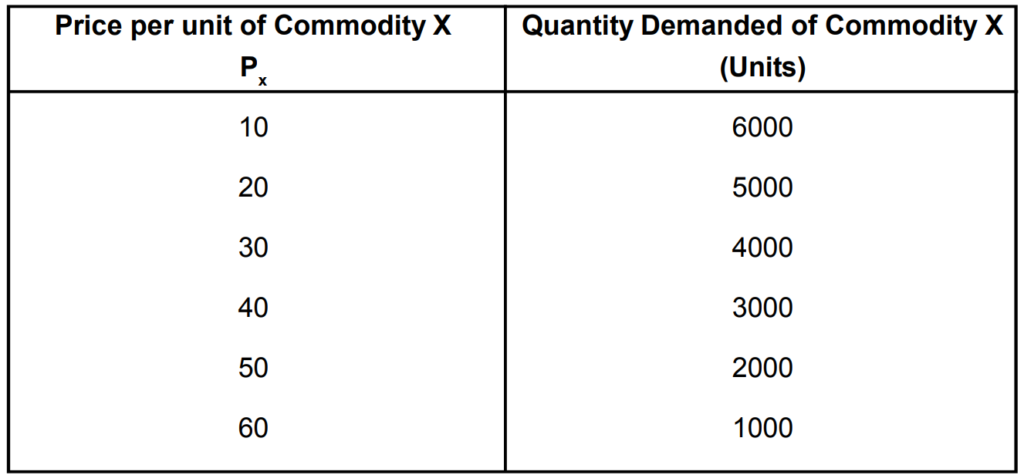
A demand curve is a graphic representation of the demand schedule. It is a locus of pairs of price per unit (Px) and the corresponding demand-quantities (Dx).
In This Curve Show relation between Quantity and Price. where X-axis measures quantity demanded and Y-axis shows prices. Demand Curve is downword sloping.
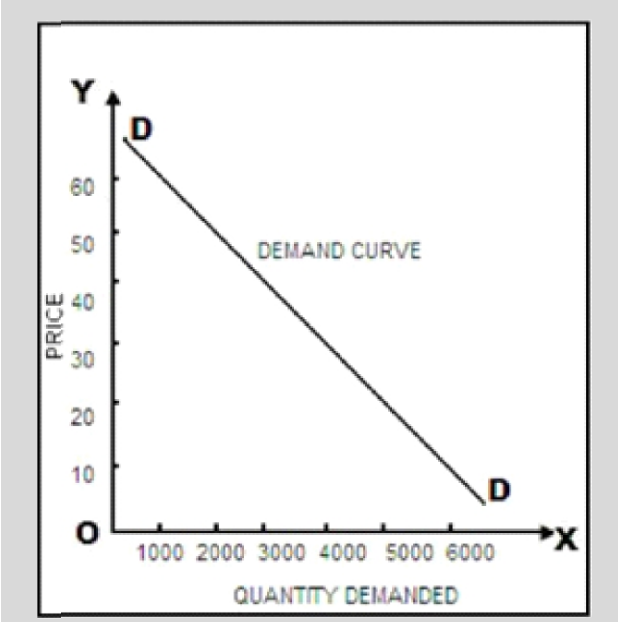
As the price increases from 10 to 60 the quantity demanded declines from 6000 to 1000, establishing a negative relation among the two.
Market Demand
For instance, if the price of a car is Rs.500000 and at this price, Consumer A demands 2 cars and Consumer B demands 3 car (assuming there are only two consumers in this market) then market demand for the car will be 5 (sum total of the demand of the two consumers).
Market Demand formula= Sum total of the demand of the Number of consumers in the Market
what is market demand ?
Sum total of the demand of the Number of consumers in the Market
What is Market demand schedule ?
Market demand schedule is the horizontal summation of individual demand
schedules.
The following table is the market demand schedule
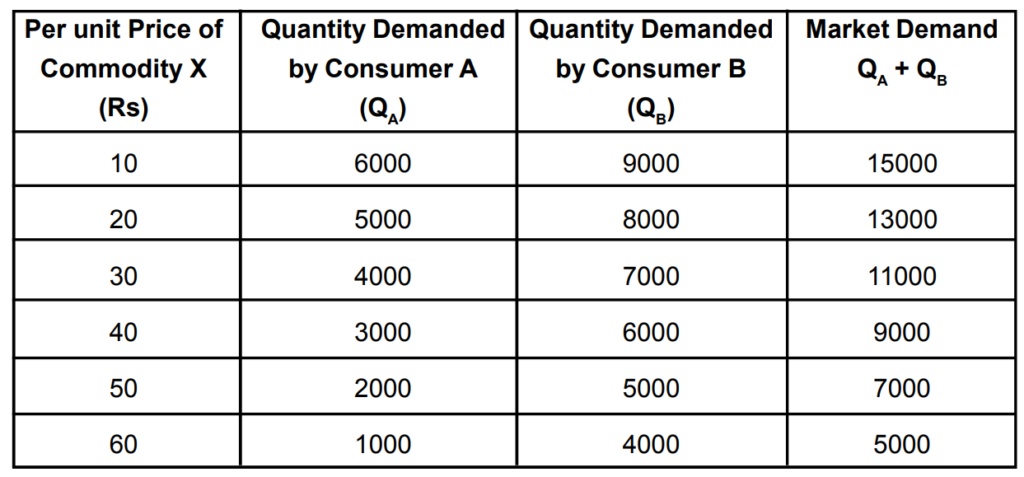
Supply Definition
Supply represents how much the market can offer. The quantity supplied refers to the amount of a good producers are willing to supply when receiving a certain price. The supply of a good or service refers to the quantities of that good or service that producers are prepared to offer for sale at a set of prices over a period of time.
Supply means a schedule of possible prices and amounts that would be sold at each price.
The supply is not the same concept as the stock of something in existence, for example, the stock of commodity X in new York means the total quantity of Commodity X in existence at a point of time; whereas, the supply of commodity X in new York means the quantity actually being offered for sale, in the market, over a specified period of time.
The Important Factors that determine Supply are
- Costs of the Factors of Production
- Change in Technology
- Price of Related Goods
- Change in the Number of Firms in the Industry
- Taxes and Subsidies
- Goal of a Business Firm
- Natural Factors
What is Supply Schedule ?
A supply schedule is a tabular statement that shows different quantities or services that are offered by the company or producer in the market for sale at different prices at a given time.
What is Individual Supply Schedule ?
Individual Supply schedule is the data showing supply of a good or service by one firm at different prices, other things remains constant or equal.
What is Market demand schedule ?
Market demand schedule is the sum of the amounts of good supplied for sale by all the firms or producers in the market at different prices during a given time.
The following is the Example data for Market supply Schedule
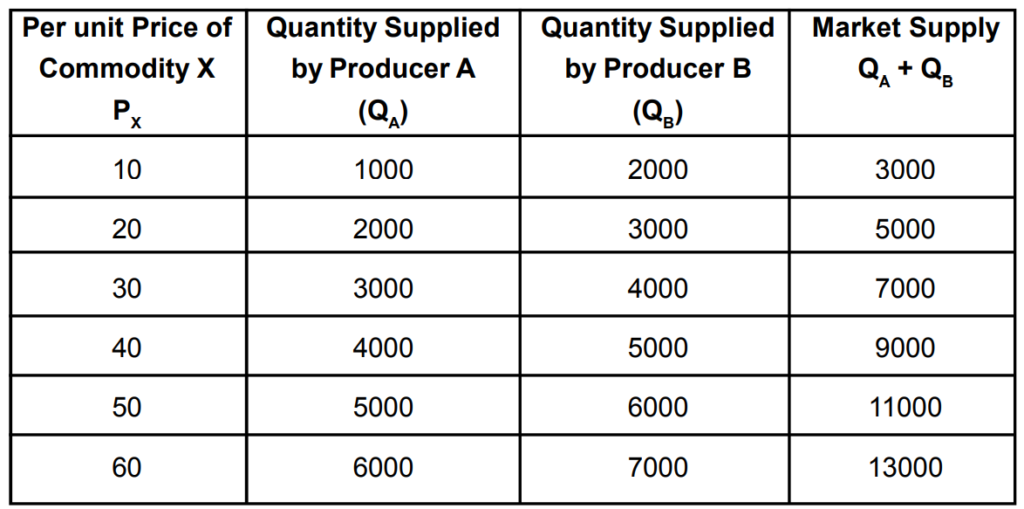
Law of Supply
The law of supply states that a firm will produce and offer to sell greater quantities of a product or service as the price of that product or service rises, other things being equal.
There is direct relationship between price and quantity supplied. In this statement, change in price is the cause and change in supply is the effect. Thus, the price rise leads to increase in supply and not otherwise.
It may be noted that at higher prices, there is greater incentive to the producers or firms to produce and sell more. Other things include cost of production, change of technology, prices of inputs, level of competition, size of industry, government policy and non-economic factors.
Supply Curve
Supply Curve: The supply curve is a graphical representation of the information given in supply schedule.
The higher the price of the commodity or product, the greater will be the quantity of supply offered by the producer for sale and vice versa, other things remains constant.
The following is one of the example of Supply Curve. The Supply Curve is upward Sloping.
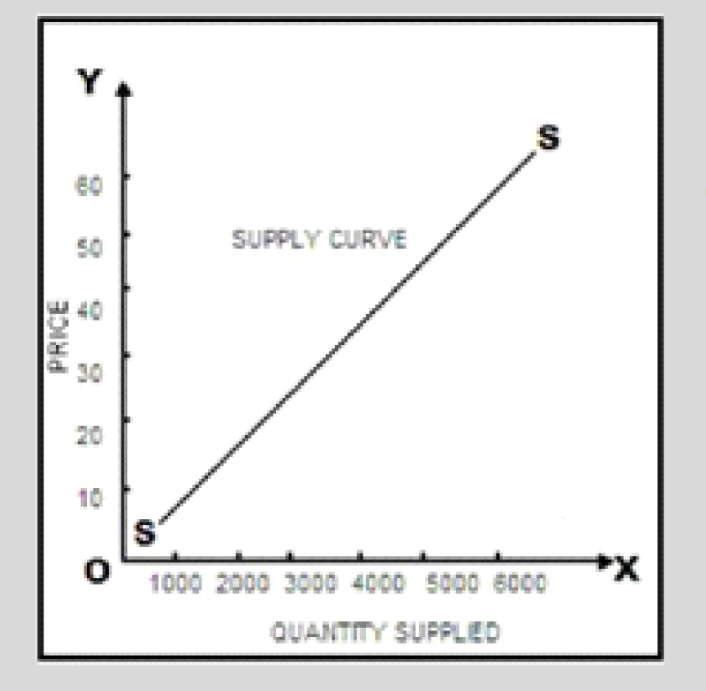
Demand and Supply
In context of demand and supply, Excess Demand is quantity Demanded is more than the quantity Supplied and Excess Supply is Opposite that is Quantity Demanded is less than the quantity Supplied.
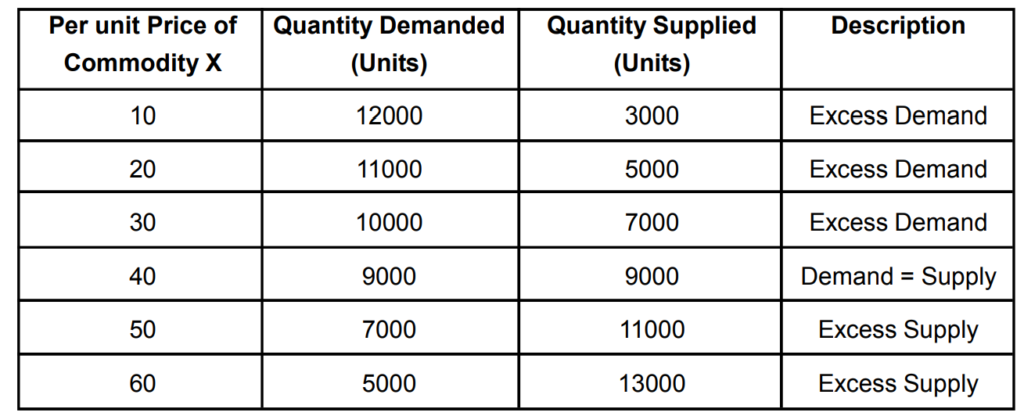
In context of demand and supply, equilibrium is a situation in which quantity demanded equals quantity supplied and there is no incentive to buyers and sellers to change from this situation.

